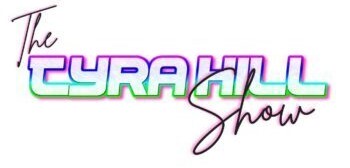You don’t have to be in the gym to get a great workout. Try these fun activities to reach your goal.
Kettlebells
One of the most effective fitness tools Iv’e found, kettlebells will boost your cardio, sculpt your body and improve your strength with every move. Kettlebells come in a wide range of weights, giving you the ability to start easy and work your way up as your fitness soars. My suggestion is to get the Empower Fitness 3-in-1 Kettlebell, which gives you five-, eight-, and 12-pound options. It also comes with Gin Miller’s Swing Yourself Fit DVD, which features three different workouts that will change your body. Kettlebells will not only tone you from head-to-toe, they are also a fun way to bust fitness boredom.
Rollerskating
Remember the good back in the day when all your friends had their birthday parties at the skating rink, and you spent hours racing around the floor? Recapture the fun by grabbing a pair of quads or inline skates and hitting the pavement. You’ll love the feel of the wind in your hair, and you’ll be psyched to know that the average 150-pound woman burns roughly 450 calories during an hour of skating.
Trampolining
Trampoline gyms like Sky Zone Indoor Trampoline Park are popping up all across the country. That’s because jumping on a trampoline is excellent exercise — and it’s just plain fun.
If you don’t have a trampoline gym in your area, create your own jumping workout using a home trampoline. Representatives from Springfree Trampoline suggest performing a total-body strengthening workout incorporating straight jumps, seat drops, pike jumps, hands-and-knees drops and jumping jacks. A 20-minute routine will leave you feeling both exhilarated and worn out
Suspension training
Suspension training using a TRX or Jungle Gym XT trainer can help you gain excellent full-body balance and strength wherever you are. These easily transportable devices engage large and small muscle groups while you perform pushups, squats, lunges and other body-weight exercises.
Outdoor cycling and Alternatives
Indoor spinning classes can be fun, but nothing beats the thrill of a real ride. Pick up a bike and hit the roads and trails for a consistently fun challenge. Constant changes in terrain will also offer a challenge. You can make it up that hill!!!
If you shy away from cycling because you can’t stand the butt burn, check out a few of the new outdoor cycling alternatives such as the Trikkeand the ElliptiGO. The Trikke engages your legs and core as you power the three-wheeled standing cycle around town, while the Elliptigo functions as an outdoor elliptical machine, allowing you to run on wheels!
Dancing
Dancing is a great way to exercise while having a blast, and the best part is that you can do it anywhere there’s music. Simply turn up your stereo and create your own routine to your favorite playlist. Zumba is a great group activity that is sure to burn 100s of calories. Cut up a shirt and show’em what you workin with!
Pole Dance
Pole dancing fitness can contribute to significant weight loss for individuals when combined with other fat burning exercises. In one single class you can burn as many as 250 calories which is the equivalent to a good gym session, says Weightlossresources.co.uk. Pole dancing will also build and tone muscles, increase flexibility, and boost confidence.
I don’t recommend skipping resistance training as building muscle will accelerate your fat loss and increase strength. Whatever you choose to add to your program, pick an activity that you enjoy. You want something to look forward to when exercising. This will keep you coming back even if you don’t feel particularly motivated that day. Tomorrow a client and I are slipping on the boxing gloves. I hope she’s ready!
~its about what YOU see in the mirror~
[twitter style=”vertical” float=”left”]
[twitter_follow language=”en”]
[digg float=”left”]
[fblike style=”standard” showfaces=”false” width=”450″ verb=”like” font=”arial”]
[fbshare type=”button”]
[linkedin_share style=”none”]
[google_plusone size=”standard”]
http://www.sheknows.com/
http://www.medicaldaily.com/














